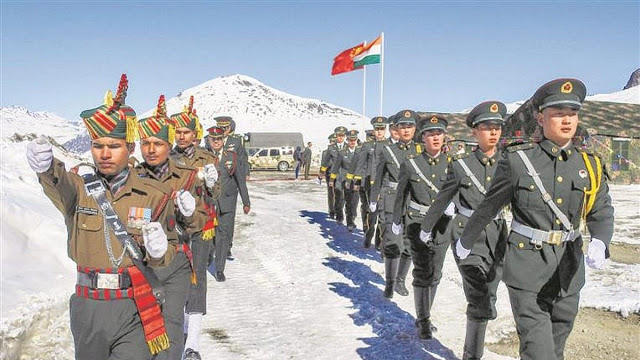Why is the Pakistan media silent on Sino-India faceoff in Ladakh?
Amid coronavirus pandemic, hybrid politicians in Pakistan have considerably been demoralised for obvious reasons. The fear of the unknown, the lockdown, and the crumbling economy are visible indicators of the state of Pakistan.

By Saleem Samad
For seven decades Pakistani hawk’s eye remained tuned to her rival India. The jingoism produced from the desk of Rawalpindi GHQ was spoon-fed to Islamist political parties, and of course, the media which includes vibrant print, electronic media, and social media platforms.
The Sino-India faceoff at Line of Actual Control (LAC) at Galwan, the rooftop of the disputed Himalayan border is a hot issue for the Pakistanis. Because Pakistan’s ‘all-weather friend’ China is at arms drawn at Ladakh for more nearly two months.
The anti-Indian rhetoric is conspicuously missing in state media, as well as in Islamist media, which usually peddles GHQ stories. No fiery words from Islamist leaders who imagine India should quit Muslim majority Kashmir.
Usually, any stand-offs between India and China triggers a hullabaloo in the Pakistani media and furore in undisguised politicking in Karachi, Lahore, Peshawar, and Islamabad too.
The hybrid politicians and nonchalant media are holding their excitement over the Indo-China stand-off. Cursing that time has ripened that India will be exposed as paper-tiger and chopped to pieces by China, blah blah!
Amid coronavirus pandemic, hybrid politicians in Pakistan have considerably been demoralised for obvious reasons. The fear of the unknown, the lockdown, and the crumbling economy are visible indicators of the state of Pakistan.
Despite no bullets being exchanged by the Chinese People’s Liberation Army and Indian Army has left the security specialists and military strategists to wonder why the troops instead were hurling verbal abuses and brickbats instead of sabre rattling with weapons.
With the advent of brutal winter round the corner in October where temperatures drop to -40 Celsius and harsh weather makes patrol or manning sentry posts very challenging.
Therefore the two rivals fought one Indo-China war in 1962. There had been a series of violent border skirmishes between the two countries after the 1959 Tibetan Uprising when India granted asylum to the 14th Dalai Lama, the venerable leader who fled after PLA brutally suppressed the uprising and captured Lhasa.
The McMahon Line is the demarcation between Tibet and the North-East region of India proposed by British colonial administrator Sir Henry McMahon at the 1914 Simla Convention signed between British and Tibetan representatives.
The stretch of the 890 kilometre border is currently the LAC between China and India. Unfortunately, the Chinese Communist Party disputes its legal status signed with the Tibetan government, which created a permanent headache of South Block in New Delhi.
Many self-styled security studies experts, retired diplomats, and top brass military officers often lament ‘missed opportunity’ of Pakistan in 1962, when the Sino-India war leading to the occupation of Aksai Chin (north of Ladhak). They suggest it was Rawalpindi’s missed opportunity to invade Jammu and Kashmir.
The Rawalpindi’s ISPR chief, Major General Asif Ghafoor who coordinates a team of fake-news production seems to be in the Covid-19 isolation ward.
The cherished dream of protagonists silently prays for another eyeball-to-eyeball confrontation to escalate, like the ‘First Kashmir War’ in 1947-48, which created Azad Kashmir. The ‘Made in China’ prayer beads bought from Mecca are going round and round in their finger of right-hand seeking blessings from the Creator for another spat of limited or wider Indo-China war.
The Pakistan-watchers in Delhi and think-tanks in India are bemused that border stand-off has been ignored in Jinnah’s orphaned nation. Pakistan’s Urdu-language television broadcast, once described as hypermedia was surreptitiously unvoiced.
Against this backdrop, a former High Commissioner to India, Abdul Basit declared that “India is now isolated in the region. China, Pakistan, Nepal, and even Bangladesh have serious issues with India. Bhutan is also interested in establishing diplomatic relations with China. And Sri Lanka and future Afghanistan under Taliban can never trust India.”
Therefore, unless India-China stand-off deteriorates, chances are that the keyboard warriors in the social media platforms will continue to murmur about this issue, but the liberal mainstream media will continue to focus on more existential issues.
The writer is a Dhaka-based independent journalist, media rights defender, a recipient of Ashoka Fellowship and Hellman-Hammett Award. @saleemsamad.
Views are personal. International Affairs Review neither endorses nor is responsible for them.